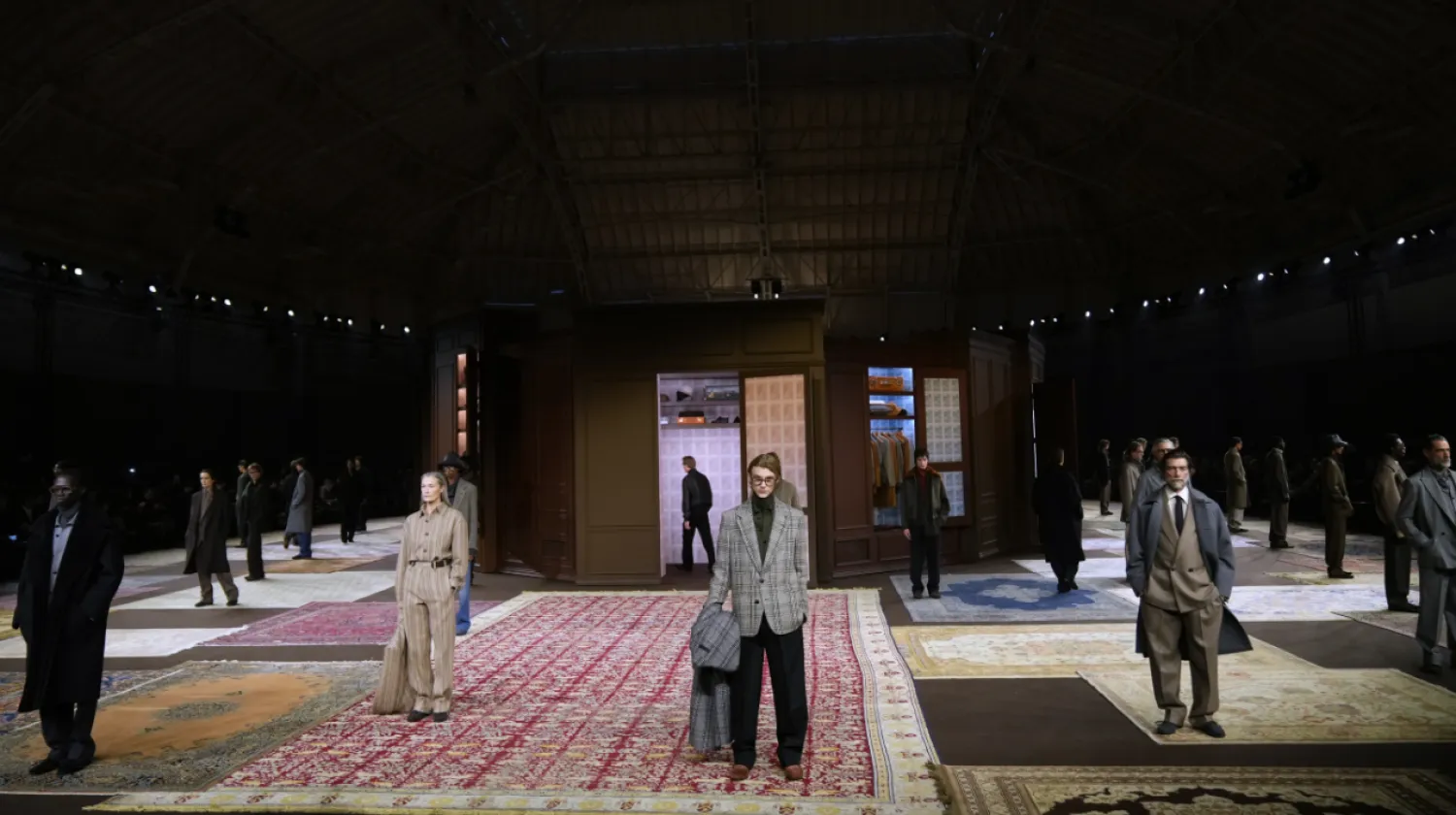The Olympic spirit permeated Milan Fashion Week, closing Monday, from Canadian designers Dsquared2 cheeky tribute to the Games, Emporio Armani’s in-store parade of Team Italia’s uniforms and Ralph Lauren’s celebrity-packed runway show, strong on ski resort wear as it prepares to outfit Team USA.
Fashion always reflects what is going on in the world at large, and the front-row chatter went beyond silhouettes, notably streamlined at Prada, and striking, inventive accessories, like Dsquared2’s hybrid winter footwear, to questions of diversity and sustainability.
Some highlights from four days of mostly menswear previews for Fall-Winter 2026-27:
Olympic Spirit The Italian fashion house Dsquared2, founded by Canadian twins Dean and Dan Caten, made a strong, if ironic, case for why they would have been a fun choice as Team Canada’s official Olympic outfitter for the Feb. 6-22 Games. Fellow Canadian Hudson Williams, the actor starring in the buzzy series “Heated Rivalry’’ about a gay hockey love story, opened the show, strutting down a fake-snow-covered staircase wearing a ripped double denim jacket and sparkly racing number.
Dsquared2 was a gold-medal contender for best footwear of the season. For women, the twins created a hybrid floating high heel that snaps into a sturdy ski boot at the ankle. The brand created a similar mashup for men. The designers played with Olympic imagery with their usual irreverence, including an intarsia Gold medal on a ski sweater, yet mindful of the International Olympic Committee’s strictly enforced copyrights.
Ralph Lauren presented a much more patrician approach to mountaineering in its stately Milan palazzo, with a mélange of colorful patterned knits and cozy fleece jackets layered with puffers and flannel that evoked the brand’s wholesome American heritage. Shown to an intimate celebrity crowd that included Nick Jonas, Tom Hiddleston and Noah Schnapp, the collection offered a cozy entrée to the Olympic season, even as news from home was anything but reassuring.
"As a designer you feel the vibrations in the world. Living in New York City and traveling around the world, you feel the vibrations, and if you are sensitive to that, you develop an ear or a feel for the clothes that you think you're going to do the next season,'' founder Ralph Lauren said in a social media campaign before the show.
Hats off at Prada Prada’s co-creative directors Miuccia Prada and Raf Simons explored the range of men’s headwear, from berets to fedoras, made foldable as if origami, that when flattened could be snapped onto the back of outerwear.
Runway highlights included a modular men’s cape that fit over coats and jackets, giving a layer of protection and utility. Men’s dress shirts had T-shirt necklines and buttoned down the back; exaggeratedly long and purposely worn cuffs protruded from jacket sleeves.
The ultra-slim silhouette of base layer car coats had fashionistas talking, but Miuccia Prada was unapologetic: “That’s fashion.’’
“Talking about intellectual honesty, we are working for a brand that sells expensive clothes to possibly rich people, and so you have to deal with beauty, elegance, to understand what is believable,’’ she said.
Legacy and Sustainability Zegna creative director Alessandro Sartori’s latest collection is about wardrobe building over seasons with pieces that can endure generations, like the fashion house itself that recently named co-CEOs from its fourth generation.
Sartori said he aims to produce more than fashion, but pieces that offer both quality and aesthetics. The jacket of the season was longer and more voluminous with square shoulders that can be worn single-breasted, double-breasted or more casually in a unique formation of three horizontal buttons. The styling versatility is achieved with a clever button-reversing mechanism.
“Our customers are collectors, and not just fashionistas,’’ he said. “I want people to collect pieces like watches.’’
Underlining that brand identity, Zegna displayed behind glass a nearly century-old jacket made with the company’s own fabrics. Today, the family-run business controls about 60% of its supply chain, which gives it a unique footprint as other Italian brands are enveloped in a supply chain scandal.
Simon Cracker, a 15-year-old brand featuring upcycled fashion, is among a small cadre of fashion houses on the Milan runway that can talk up sustainability with any credibility.
Jewelry for Men From the red carpet to the runway, jewelry is becoming a central consideration for men’s wardrobes. Dolce & Gabbana’s evening looks were strong on lapel jewels, from big floral pins to ornate gold brooches embedded with watches, some with long, elegant chains — true heirloom pieces. Giorgio Armani included a smattering of subtle lapel pins for men.
Prada fastened its exaggeratedly long sleeves with gemstone cufflinks, like lapis lazuli and tiger’s eye. Mismatched sculptural earrings finished the look.
Diversity and inclusion Ghanaian designer Victor Hart made his Milan runway debut supported by the decade-old Afrofashion Association, with a strong collection of statuesque denim looks that incorporated street touches like industrial belting.
Milan fashion experienced a mini-Renaissance of diversity and inclusion in the wake of the Black Lives Matters movement in 2020, after designers like Stella Jean and Edward Buchanan as well as the Afrofashion Association's Michelle Ngonmo, demanded action. But the spotlight has dimmed more recently.
Casting models from different races is the easiest, and some say most performative, way to achieve diversity. And still brands fall short. Dolce & Gabbana, which weathered a storm in 2018 over advertisements that were perceived as anti-Asian, was called out on social media for all-white runway casting for Saturday’s menswear show.
French fashion TikToker Elias Medini called it “fifty shades of white," while Hanan Besovic, the influencer behind @ideservecouture, said “having a cast of all white models in 2026 is diabolical.’’









